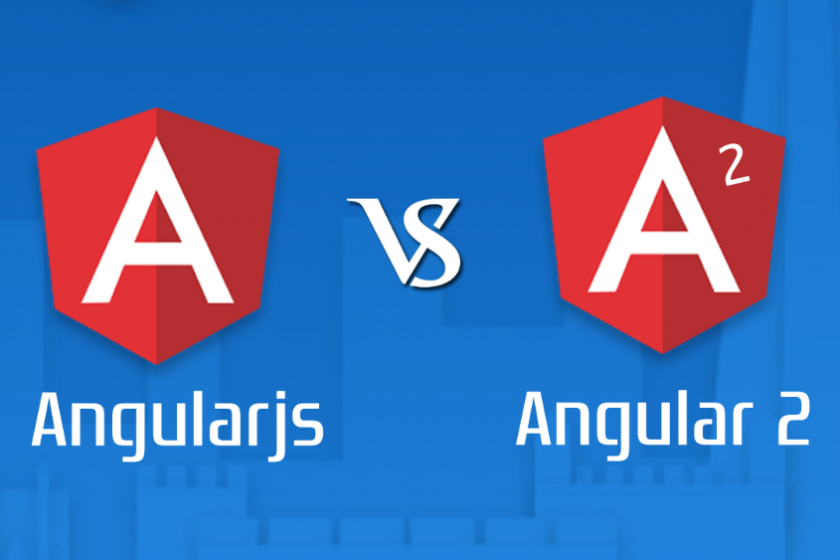Lots of developers wonder what lies at the core of the most popular frameworks. From today’s article, you’re going to learn more about AngularJS and Angular 2, their main differences, and possible case uses.
Angular Versions
Angular JS is an open-source framework for web-frontend development. Most AngularJS Development services opt exactly for this framework because of its ease of use and familiarity, since it uses pure JavaScript. But when there’s no JS attached to the familiar Angular framework, this means you’re dealing with Angular 2. Unlike its JS counterpart, Angular 2 is based on Typescript.
Language
The first point of comparison of the frameworks in question is their language.
As it has been noted earlier, both AngularJS and Angular 2 use JavaScript. But the latter also used Typescript under the hood. It’s a superset for JS that has such benefits as static typing, the ability to spot bugs in real time, and a lot of additional IDES.
Code Generator
The next point of comparison is their code generator.
Angular 2 uses a command-line interface, CLI, which helps initialize, develop, and maintain Angular applications directly from a command shell. AngularJS, to the contrary, is deprived of such a benefit.
Components versus Controllers
AngularJS is based on the MVC model, which means that the basic component of this architecture that manages the data and rules is the model. The view displays output based on the data in the model. The controller, in its turn, collects input, processes it, and converts it into commands that are sent to the model and the view.
Angular 2 is based on the concept of component architecture, where the basic UI elements are represented by a component. Components replace controllers from AngularJS. To put it simply, any component essentially is a directive with a template. It’s mainly responsible for handling the view and the logic of the page.
Form Validation
In Angular 2, the form validation doesn’t differ from that of AngularJS. It’s performed on a template basis and requires JavaScript to be executed. However, in Angular 2, form validation became secure and more intuitive. Now developers can gain more insights into how users are interacting with forms and more options are available for enhancing this experience.
Routing
As you may know, routing is used to handle users’ interactions with an application, as well as determine the part of the webpage that will be displayed to users after they perform certain actions. By developing a routing app, coders utilize Angular routers to control users’ actions on the page and interpret them. Angular allows developers to substantially simplify this process.
Performance
What about the performance of AngularJS versus Angular 2? Let’s check it right now.
Speed can be easily a decisive difference for many developers, especially when there is a need for a fast and highly responsive application. And low performance is one of the main cons AngularJS is criticized for. This is why when the original development team decides to work on Angular 2, they often end up dedicating a lot of time and energy to solving this problem and boosting the initial performance.
For instance, even though the two-way binding makes developers’ lives much easier, it imposes an additional burden on users’ browsers, which need to process a whole lot of data. This results in a deceleration in web page loading speed. Angular 2 helped to optimize this whole process. And with the help of Angular Universal, you can achieve a considerable decrease in processing time on the client side.
Angular 2 has improved performance due to a better structure and tree-based change detection algorithm. Besides, the hierarchical dependency injection system also allows for additional improvement in performance. So, now it’s easier to create big and complex apps with Angular 2.
Codebase Size
When it comes to codebase size, JavaScript has an indisputable advantage over its Typescript counterpart. JS is quite brief and isn’t overburdened with additional transplantation. Yet, Angular 2 relies on Typescript. So, the development process and the app speed tend to drop slightly.
Learning Curve and Ecosystem
You may know the feeling when learning AngularJS. Lots of developers tend to revel in how easy and smooth the learning process is. Still with Angular 2, one needs to master Typescript, which is somewhat different from your previous experience with its JS counterpart. Still, this is not such a big deal.
As for their use cases, they are pretty much the same. As most developers note, the presence of Typescript broadens Angular’s horizons and encourages developers to improve their skills. Thus, Angular 2 is ideal for formidable and ambitious projects.
That being said, you can successfully use both frameworks for creating single-page apps and dynamic websites. They also help industries build robust, stable, and secure enterprise applications with better performance. Finally, you want to turn to Angular, if you need to develop a progressive web application for your business.































































